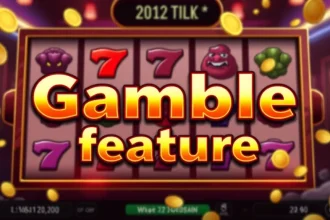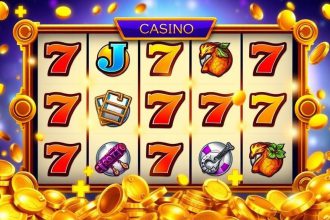Wild symbols are core components in online slots, substituting for other symbols to complete winning combinations on paylines. Introduced in early video slots like IGT’s Double Diamond in 1996, they increase hit frequency and payout potential. In 2025, wilds appear in 95% of slots, with RNGs ensuring random placement at rates of 5-15% per spin. This article details common types of wild symbols, their mechanics, and examples from specific slots, focusing on how they modify gameplay without altering base RTP (typically 92-98%).
Standard Wilds
Standard wilds act as simple substitutes for any regular symbol, excluding scatters or bonuses, to form wins. They land on reels like any icon, boosting combinations without additional effects. In NetEnt’s Starburst (2012, 96.09% RTP), the star wild substitutes for gems on reels 2-4, enabling bidirectional pays. This type raises win probability by 10-20% on average, per slot math models, but offers no multipliers.
Expanding Wilds
Expanding wilds cover an entire reel when landing, substituting across all positions on that reel. Triggered on partial or full appearance, they expand vertically, often with animations. In Play’n GO’s Book of Dead (2016, 96.21% RTP), the book wild expands during free spins if part of a win, covering three positions for multi-line payouts up to 5,000x. Expansion occurs post-spin evaluation, increasing ways to win from 10 to hundreds in megaways variants.
Sticky Wilds
Sticky wilds remain fixed on the reels for multiple spins, substituting in place until a set number of rounds or a bonus ends. They lock after landing, enhancing subsequent spins. In Microgaming’s Immortal Romance (2011, 96.86% RTP), sticky wilds in the Wild Desire feature hold for up to five reels, with multipliers up to 5x. Stickiness lasts 1-5 spins typically, raising volatility by locking high-value positions.
Multiplier Wilds
Multiplier wilds apply a fixed or variable multiplier (2x-10x) to wins they complete, substituting while boosting payouts. They may stack if multiple appear. In Pragmatic Play’s Sweet Bonanza (2019, 96.51% RTP), candy bomb wilds multiply wins by 2x-100x in tumbles. Multipliers compound additively or multiplicatively, per game rules, amplifying max wins to 21,100x in this case.
Walking Wilds
Walking wilds shift positions across reels on each spin, substituting as they move until exiting the grid. They typically move left or right, triggering respins. In NetEnt’s Jack and the Beanstalk (2013, 96.28% RTP), beanstalk wilds walk left with free respins, substituting on each step. Movement is deterministic, lasting 2-5 spins, increasing cumulative win potential by 15-25%.
Stacked Wilds
Stacked wilds appear in vertical groups (2-5 symbols), substituting across multiple paylines on a reel. They land partially or fully, covering rows for block wins. In IGT’s Siberian Storm (2011, 96% RTP), tiger wilds stack on reels 2-4, enabling multiway pays up to 1,000x. Stacks raise reel coverage to 30-50%, per spin, but depend on RNG for full appearance.
Cascading Wilds
Cascading wilds trigger symbol removals and replacements, substituting in new formations after wins. They integrate with avalanche mechanics. In Gonzo’s Quest by NetEnt (2011, 95.97% RTP), golden wilds substitute and cascade with multipliers up to 15x. Cascades continue until no wins, averaging 2-4 per trigger.
Wild symbols enhance slot math by increasing hit rates (20-40%) and volatility, with types tailored to game themes. Players should check paytables for specific behaviors, as they do not affect overall RTP but influence variance.








